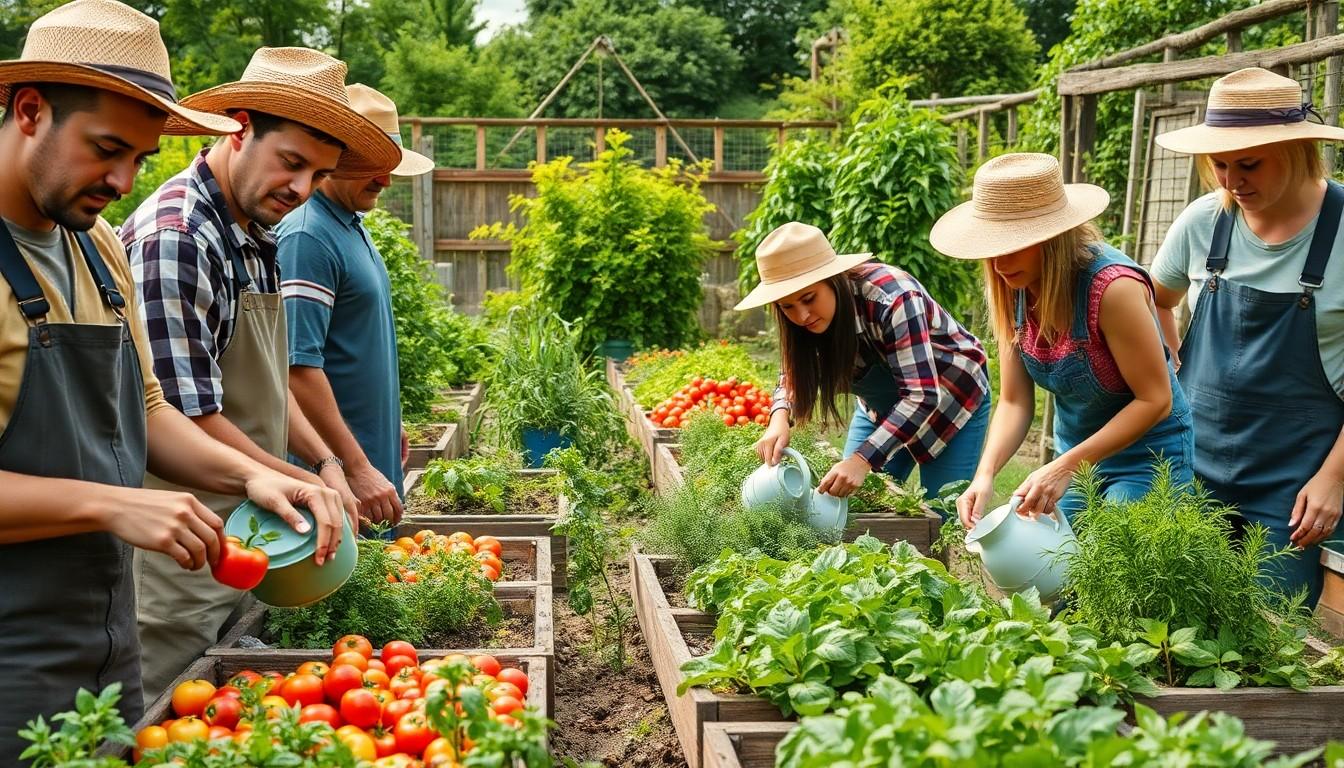The Best Fluffy Pancakes recipe you will fall in love with. Full of tips and tricks to help you make the best pancakes.

In a world buzzing with chemical-laden crops and fast food, organic farming stands as the superhero of agriculture. This eco-friendly approach not only nurtures the planet but also tickles the taste buds with fresh, flavorful produce. As students dive into AP Human Geography, understanding organic farming’s role in shaping communities and landscapes becomes essential. It’s like discovering that your favorite pizza is actually made from veggies grown without any sneaky pesticides!
Organic Farming AP Human Geography
Organic farming emphasizes eco-friendly practices that foster sustainability. This method prioritizes natural inputs over synthetic chemicals, promoting healthier ecosystems. It encompasses diverse techniques such as crop rotation, composting, and biological pest control. Given its inherent philosophy, organic farming nurtures soil health, protects biodiversity, and enhances food quality.
The demand for organic products has surged, reflecting a growing consumer awareness regarding food safety and environmental impacts. Statistics indicate that the organic food market reached approximately $62 billion in 2021 in the United States alone. Many consumers associate organic practices with improved taste and nutritional value.
Education plays a crucial role in promoting organic farming. Agricultural schools often incorporate organic practices into their curriculum, preparing future farmers. Knowledge about sustainable techniques aids in addressing challenges like food insecurity and climate change.
Urban areas also see increased interest in organic farming. Community gardens cultivate awareness while providing fresh produce. These urban initiatives boost local economies and foster community engagement.
Regulatory bodies establish standards for organic farming to ensure integrity. The USDA certifies organic farms, verifying adherence to specific guidelines. Consumers often seek certification labels, gaining confidence in the quality of organic products.
Ultimately, organic farming contributes to a healthier planet. It offers an alternative to conventional agricultural practices, aligning with the principles of sustainability that resonate with many environmental advocates. Students studying AP Human Geography can appreciate the intersection of agriculture, environmental impact, and consumer behavior within this context.
Importance of Organic Farming in AP Human Geography

Organic farming plays a critical role within the framework of AP Human Geography. It not only addresses contemporary agricultural challenges but also embodies the relationship between environment, economy, and community.
Environmental Impact
Organic farming supports environmental health through reduced chemical use and sustainable practices. By utilizing techniques like crop rotation and composting, organic methods enhance soil fertility and structure. Biodiversity thrives in organic systems, as mixed cropping prevents monoculture, leading to resilience against pests and diseases. The practice also promotes better water management, reducing runoff and conserving resources. Consumer demand for organic products mirrors a growing consciousness about ecological sustainability, which reached around $62 billion in the U.S. in 2021. Students studying these dynamics appreciate how organic farming fosters healthier ecosystems while mitigating climate change effects.
Economic Sustainability
Economic sustainability becomes evident in the profitability of organic farming. Organic produce often fetches higher prices in the market, allowing farmers to achieve better returns on their investments. Community-supported agriculture models link producers directly with consumers, generating local income and reinforcing food security. This approach nurtures local economies through job creation and the promotion of local goods. Educational institutions also emphasize organic farming, equipping future farmers with skills aligned to current market demands. Regulatory frameworks, such as USDA certifications, strengthen consumer trust and encourage market growth. Ultimately, this multifaceted economic landscape illustrates the importance of organic farming in fostering sustainable communities.
Key Concepts in Organic Farming
Organic farming includes several key concepts that promote sustainability and environmental health. Understanding these principles aids in grasping its significance in AP Human Geography.
Crop Rotation and Biodiversity
Crop rotation enhances biodiversity by preventing soil depletion and reducing pest outbreaks. This practice involves alternating the types of crops grown in a specific area over time to improve soil structure and nutrient balance. For example, incorporating legumes can introduce nitrogen back into the soil, benefitting successive crops. Organic farmers utilize diverse plant species to attract beneficial insects, which contribute to natural pest control. Implementing crop rotation fosters a more resilient agricultural ecosystem, supporting various organisms while decreasing dependency on chemical pesticides.
Soil Health and Fertility
Soil health is crucial for sustaining organic farming practices. Adding organic matter, such as compost or green manures, boosts soil fertility and microbial activity. Enhanced soil structure aids water retention and reduces erosion. Organic farming encourages practices that preserve and increase soil health, ensuring crops receive essential nutrients. Practices like cover cropping help protect the soil during off-seasons, preventing nutrient loss. Healthy soil anchors the foundation of organic agriculture, directly influencing crop yield and resilience.
Challenges and Opportunities
Organic farming faces both significant challenges and unique opportunities in AP Human Geography. Understanding market dynamics and regulatory measures provides insight into its future.
Market Demand and Consumer Trends
Consumer interest in organic products continues growing, evidenced by the $62 billion market in the U.S. in 2021. Increased awareness of food safety and environmental impacts drives this trend. Many individuals associate organic practices with superior taste and nutritional value. Educational campaigns also play a part; they inform buyers about the benefits of organic farming. Shifts toward health-conscious lifestyles further fuel demand for organic produce. Communities are cultivating local markets to support sustainable practices. Organic options are not only sought after but preferred, illustrating a clear trend toward ecologically friendly consumption.
Policy and Regulation
Regulatory frameworks heavily influence organic farming practices, ensuring product integrity through certifications. The USDA sets strict guidelines governing organic farming, maintaining consumer confidence. Compliance with these regulations can present challenges for farmers. Additionally, navigating bureaucratic processes often requires time and resources. Supportive policies, however, encourage sustainable agricultural practices. Special programs geared toward organic initiatives offer financial and educational backing to farmers. These policies promote environmental sustainability while addressing economic challenges, contributing to the system’s resilience.
Embracing Organic Farming
Organic farming stands at the crossroads of environmental sustainability and economic viability. Its practices not only enhance soil health and biodiversity but also cater to a growing consumer base that values quality and safety. As educational institutions and regulatory bodies support this movement, the future of organic farming looks promising. By fostering a deeper understanding of its principles within the framework of AP Human Geography, students can appreciate the broader implications of agricultural practices on society and the environment. Embracing organic farming is not just a trend; it’s a necessary shift towards a healthier planet and community.
